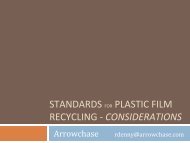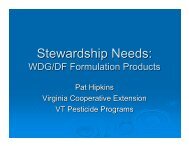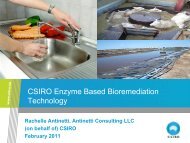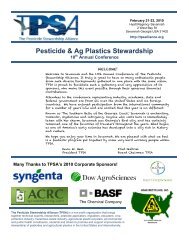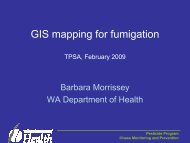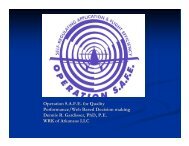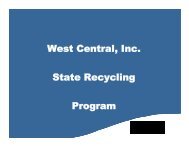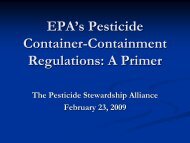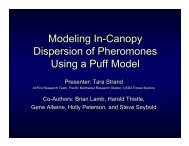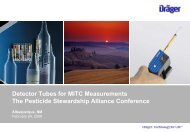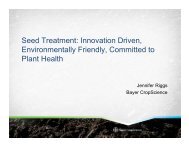Clean Sweep Programs - US Environmental Protection Agency
Clean Sweep Programs - US Environmental Protection Agency
Clean Sweep Programs - US Environmental Protection Agency
- No tags were found...
Create successful ePaper yourself
Turn your PDF publications into a flip-book with our unique Google optimized e-Paper software.
Each additional pound represents $1.50 to $14 in disposal costs; each laboratory sample may cost $250 to$1,500. They recommend:- the survey and registration forms be multi-purpose- the forms represent exactly the information needed by project planners and contractors- the forms are easily understood with examples provided- the forms easily translate into a database- products in large or special containers be more easily identified.Second, CS96 provided a hazardous waste provider checklist designed for temporary collectionsites which could be modified for permanent sites.GLOW CountiesIn 1995, the GLOW counties were awarded funding to conduct a Farm Pesticide AmnestyCollection. In 1997, believing a second farm pesticide collection was warranted, they sought funding fromN.Y. State, which was denied, but then applied in 1998 to EPA and received $70,000. Representativesfrom agencies within the four counties formed a Coordinating Committee. Four thousand color posterswere distributed and newsletters and direct mailings publicized the collections. Since preregistrations werelower than expected and below what was fundable, GLOW asked for and got permission to allow farmersfrom seven adjacent counties to participate on “as approved” basis. All participants were required to attenda 3-hour training course on such topics as handling spills and packaging materials for transport. Participantswere issued a travel waiver from the N.Y. State Department of Transportation which allowed them totransport their materials to the site. Farmer attendees also received applicator credits toward their statelicenses. During the spring of 1999, 24,610 pounds of pesticides were collected from 43 farmers, of which2,013 are classified as persistent, bioaccumulative and toxic (PBT) pesticides. Training and disposal coststotaled $39,990, and additional costs for publicity and personnel totaled $10,718, for a total of $50,708, oran average of $1,179 per participant.Schuyler CountyIn May 2000, the Recycling and Solid Waste Program of Cornell Cooperative Extension ofSchuyler County held a one-day combined farm pesticide/household hazardous waste/used tire collectionprogram. This was the county’s first collection since 1997, and was funded mainly by the county, withsupplemental funding from the U.S. EPA. The waste hauler’s manifest, which includes the overpack drums,listed 960 pounds (9 drums) of farm pesticide waste that were collected from 14 agricultural participants(farmers and agribusinesses). An additional 1.5 tons of household hazardous waste collected from 120residents included at least 168 pounds of pesticides. Including the residents who brought tires, more than300 people participated in the program. The relatively poor farmer participation was attributed to farmer’spreference to keep pesticides until after harvest and hesitancy to preregister. A total of 451 pounds ofagrichemicals (an underestimate of the actual amount collected) were identified on the registration formssubmitted by the agricultural participants. These agrichemicals included approximately 24 pounds of PBTpesticides, including 15 pounds of DDT.Six months prior to the collection day, the county began sending out a series of press releasesdescribing the event and publishing articles in the Cooperative Extension and Chamber of Commercepublications. Mailings were done to over 300 farmers and fliers were posted around the county in



